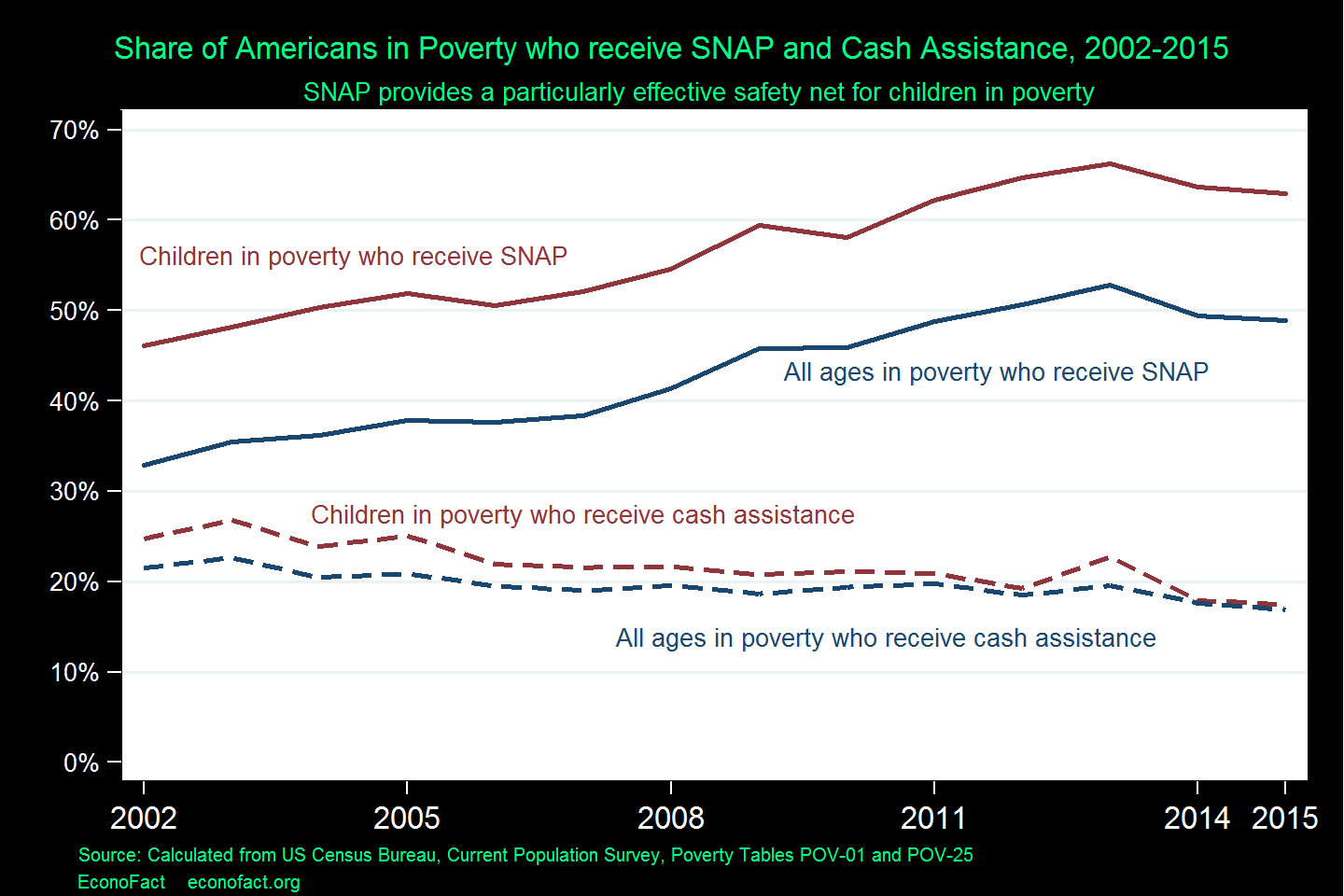Anti-Poverty Program at Stake in Battle Over 2018 Farm Bill
Friedman School of Nutrition & Department of Economics, Tufts University

The Issue:
Congressional committees in the House and the Senate have begun hearings towards the next Farm Bill, replacing the 2014 legislation that authorizes about $100 billion per year in Federal spending for agriculture, food and nutrition assistance and is set to expire in 2018. Many programs funded through the farm bill are facing unprecedented pressure. Major changes being debated include separating agricultural and nutrition programs, as called for in the 2016 Republican party platform, and replacing nutrition programs with block grants for each state to administer. Both of these proposed changes could lead to dramatic cuts to the Supplemental Nutrition Assistance Program (SNAP).
The Supplemental Nutrition Assistance Program accounts for the bulk of Farm Bill spending and provides a safety net that disproportionately helps children in poverty.
The Facts:
- The U.S. Farm Bill has been renegotiated every 4 or 5 years since the 1930s, providing an evolving framework by which Congressional support for agricultural producers is tied to nutritional programs for low-income households. Under the most recent 2014 bill, agriculture and nutrition accounted for roughly 4 percent of all Federal spending. Farm Bill support for agriculture traces its roots to the economic depression and the dust bowl of the 1930s, establishing production controls and import restrictions on a number of commodities to raise farm incomes. Since the late 1990s, the composition of that agricultural support has shifted from market interventions that raise prices to direct payments and crop insurance, the value of which is shared between farm operators and landowners. Nutrition programs have been included in the Farm Bill since the early 1970s, enlarging the coalition of groups interested in shaping the bill through the agriculture committees in Congress and its implementation by the U.S. Department of Agriculture. A key feature of both the agriculture and nutrition titles of the bill is that they serve primarily to authorize safety net programs, defined as mandatory spending which all eligible households can receive. Spending on farm programs is triggered mainly by fluctuations in commodity prices and crop yields, while eligibility for nutrition assistance is determined by family income and the presence of children in the household.
- Over time, spending on agricultural programs has declined and nutrition assistance has risen, particularly through the Supplemental Nutrition Assistance Program. Of the total spending authorized by the bill currently in place, about one quarter supports farm production with the other three quarters devoted to nutrition assistance. In 2014, farm payments went to a total of almost 746,000 farmers who received an average of about $18,000 each, while SNAP benefits went to over 22.5 million households who averaged about $3,000 each.
- Changes in welfare programs for low-income people ended most cash assistance, leaving SNAP, formerly known as food stamps, as one of America’s largest anti-poverty programs. It is estimated that assistance from SNAP contributes to lifting 4.6 million individuals out of poverty including 2 million children – more than any other program after Social Security and Earned Income Tax Credits. As of 2015, about half of all people in poverty and over 60 percent of all children in poverty received SNAP benefits, in contrast to under 20 percent receiving any kind of cash benefit (see chart). SNAP operates by providing over 22 million households with an EBT debit card to purchase SNAP-eligible foods. About 15 percent of rural Americans receive SNAP benefits, in contrast to about 11 percent in urban areas. Eligibility is limited, and not all eligible households actually receive benefits due to a variety of constraints on participation.
- While each Farm Bill is mostly used for safety-net type transfers that help stabilize incomes without distorting incentives, some provisions have large effects on the food system. Farm support now flows mainly through crop insurance, which encourages riskier farming practices; SNAP benefits can be used only for grocery purchases, supporting meals at home. The Farm Bill is also used to fund research, education and quality improvement services.
- Debates over the 2018 Farm Bill come during a cyclical downturn in farm income and farmland values associated with lower commodity prices due to past surges in production. In periods like this there is often more Federal spending on farm support, which could come at the expense of nutrition assistance – but with rising influence of more affluent suburban interests with little concern for either agriculture or poverty reduction, both could be heavily cut.
What this Means:
Expiration of the current Farm Bill poses a major challenge for Congressional leaders, who face unprecedented pressure to cut or eliminate the basic safety nets it provides. The rise of Republican leaders serving more affluent suburban constituencies, who do not face the kind of shocks that Farm Bill programs are designed to offset, has led to calls for large cuts and restrictions on both agricultural and nutrition programs. New legislation will be shaped by a long and uncertain process, with high stakes for farmers and for low-income children whose parents rely on SNAP benefits to buy groceries and put food on the table.
Like what you’re reading? Subscribe to EconoFact Premium for exclusive additional content, and invitations to Q&A’s with leading economists.
